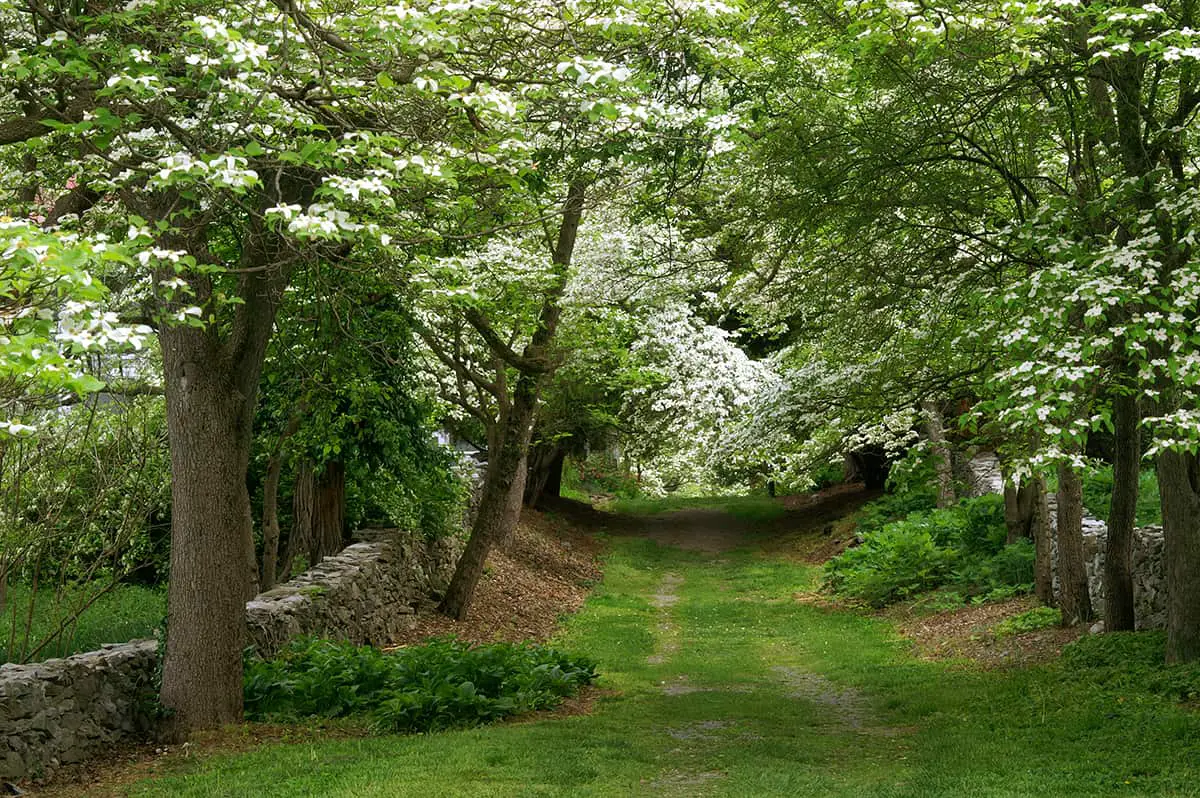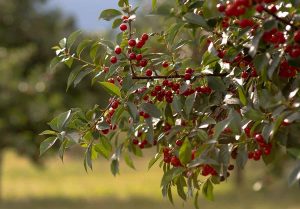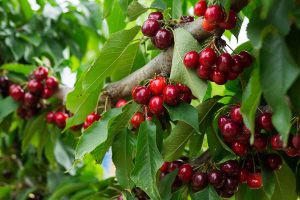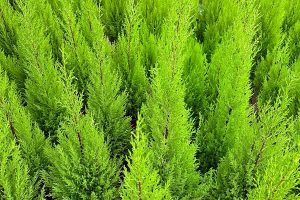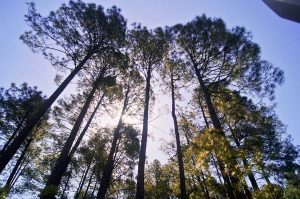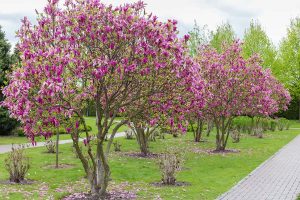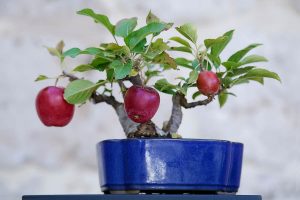Trees are critically important to our planet, to the extent that we wouldn’t be able to survive without them. It is estimated that there are over 3 trillion trees growing on Earth, which equates to more than 400 trees for each living person.
The trees are made up of more than 70,000 different species, which are also known as ‘types’ of trees. Here we explore the most common types of trees which are grown as landscape trees, in public parks, and in gardens.
Table of Contents
- How Many Types of Trees Are There?
- Trees Categorized by Species
- Abies Species
- Acacia Species
- Acer Species
- Alnus Species
- Betula Species
- Cedrus Species
- Cercis Species
- Cornus Species
- Cupressus Species
- Eucalyptus Species
- Fagus Species
- Fraxinus Species
- Ilex Species
- Juniperus Species
- Magnolia Species
- Picea Species
- Pinus Species
- Populus Species
- Prunus Species
- Quercus Species
- Salix Species
- Thuja Species
- Ulmus Species
How Many Types of Trees Are There?
Recent studies by scientists concluded that there are around 73,000 different species of trees on the planet, including around 9000 species that have yet to be discovered. Prior to this, the estimate for the number of different tree species on earth was 64,000 because this is the approximate number for the number of trees that have been documented.
Trees are organized into families, which are then broken down into genera, and each genus is then broken down into species.
Trees Categorized by Species
Abies Species
Common Name: Fir Trees
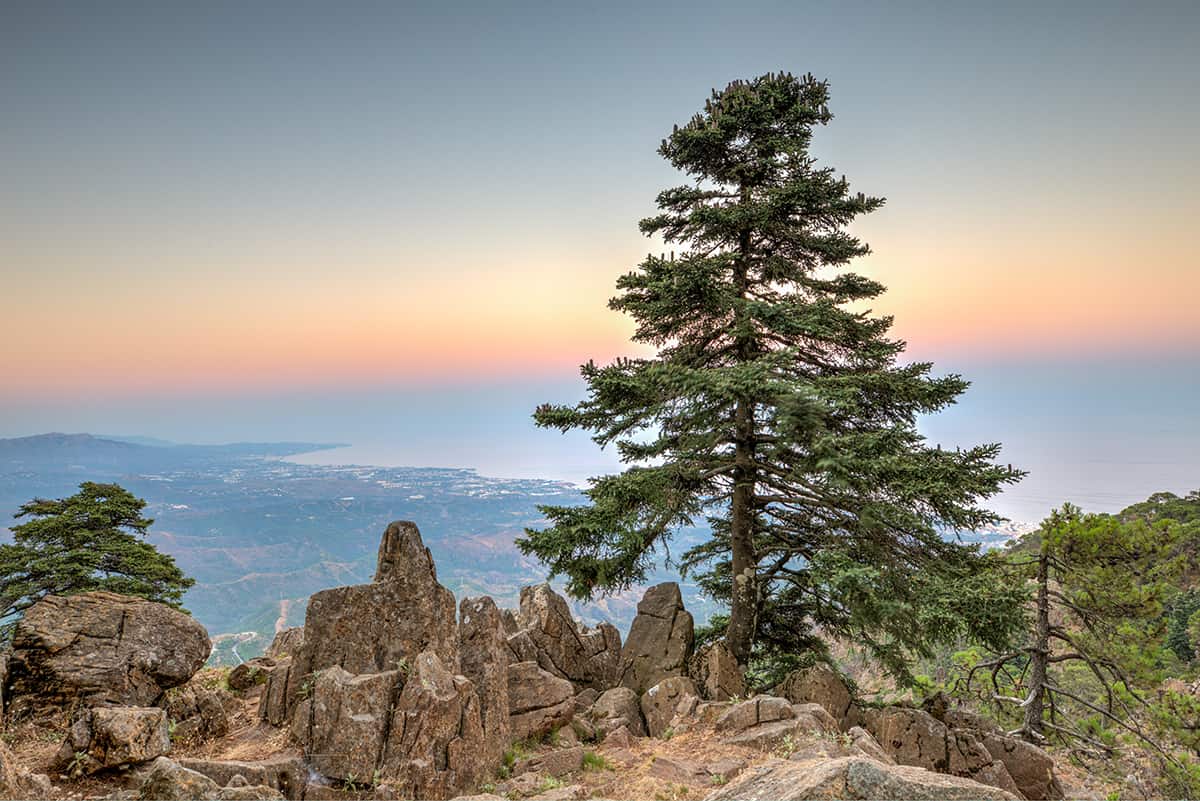
Fir trees are closely related to Cedar trees and have very similar appearances, both belonging to the Pine (Pinaceae) family. They are evergreen, coniferous trees, which are predominantly native to mountainous regions throughout North America, Asia, and Europe. Fir trees can be distinguished by their cones, which stand pointing upwards at the tips of their branches.
They have needle-like foliage which can vary from whitish-green through to dark green depending on the type of tree. Fir trees are easy to care for and are one of the best low-maintenance trees, making them ideal for adding shade and year-round color to the garden. They are also grown for their wood which is known for being strong and durable, and some types of fir are specifically cultivated to be sold as Christmas trees.
Types of Fir Trees:
- Greek Fir
- White Fir
- European Fir
- Fraser Fir
- Korean Fir
- Grand Fir
- Caucasian Fir
Acacia Species
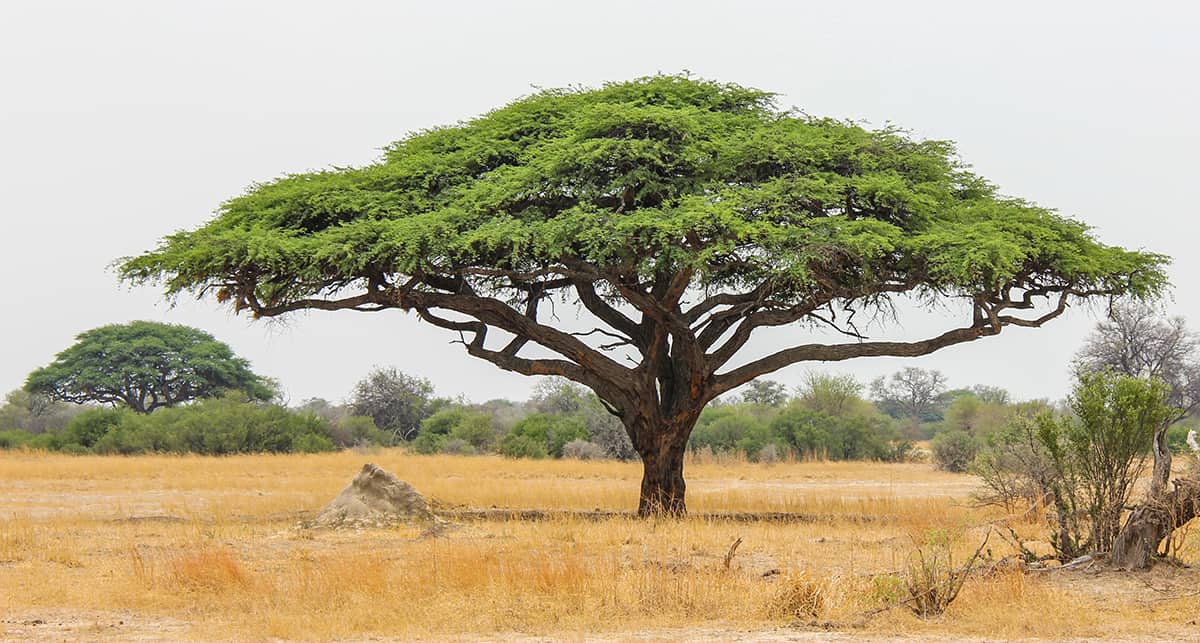
Common Name: Acacia Trees/ Wattle Trees
The Acacia genus of trees comprises more than 1300 species, including both trees and shrubs. The common name of ‘wattle’ is believed to have been derived from Proto-Germanic words which translate to mean ‘to weave’. This is a reference to the fact that Acacia branches and stems were used to weave fences, roofs, walls, and other structures and items in the early 1800s.
Today it is commonly used in furniture making, as Acacia wood is known to be extremely dense and strong, which makes it durable and sturdy. It has a rich, tan color which is considered to be broadly attractive, and it also possesses water-resistant qualities which make it well suited for use as outdoor furniture.
The fact that Acacia trees grow quite quickly also means they are reasonably sustainable, and the wood is fairly inexpensive compared with other hardwoods. Acacia trees grow well in tropical climates, where they can produce clusters of fragrant flowers at their branch tips. Unfortunately, these trees tend to be quite short-lived, with a typical lifespan of between just 20 and 30 years.
Types of Acacia Trees:
- Leatherleaf Acacia
- Cootamundra Wattle
- Silver Wattle
- Sweet Acacia
- Knife Acacia
- Pearl Acacia
- Swamp Wattle
Acer Species

Common Name: Maple Trees
There are over 130 species of Acers, which belong to the Soapberry (Sapindaceae) family. The majority of Acer trees are native to Asia, though there are also some which hail from North America, Europe, and North Africa. In North America, Maple trees are considered to be among the best shade trees, which bring lush foliage to the summer months and vivid fall colors towards the latter half of the year.
Many Maple trees also have interesting bark, which is appreciated when it is on display through winter, as the leaves shed. As well as being loved for their striking canopy, Maple trees are known for their sap which is used to produce maple syrup. Maple trees are also grown for their lumber, which is a strong and elegant hardwood. If your garden isn’t big enough for a large Maple tree, there are plenty of smaller types of Acer’s that produce similar stunning foliage but on a much smaller scale.
Types of Maple Trees:
- Florida Maple
- Paperbark Maple
- Bigleaf Maple
- Japanese Maple
- Norway Maple
- Red Maple
- Sugar Maple
Alnus Species
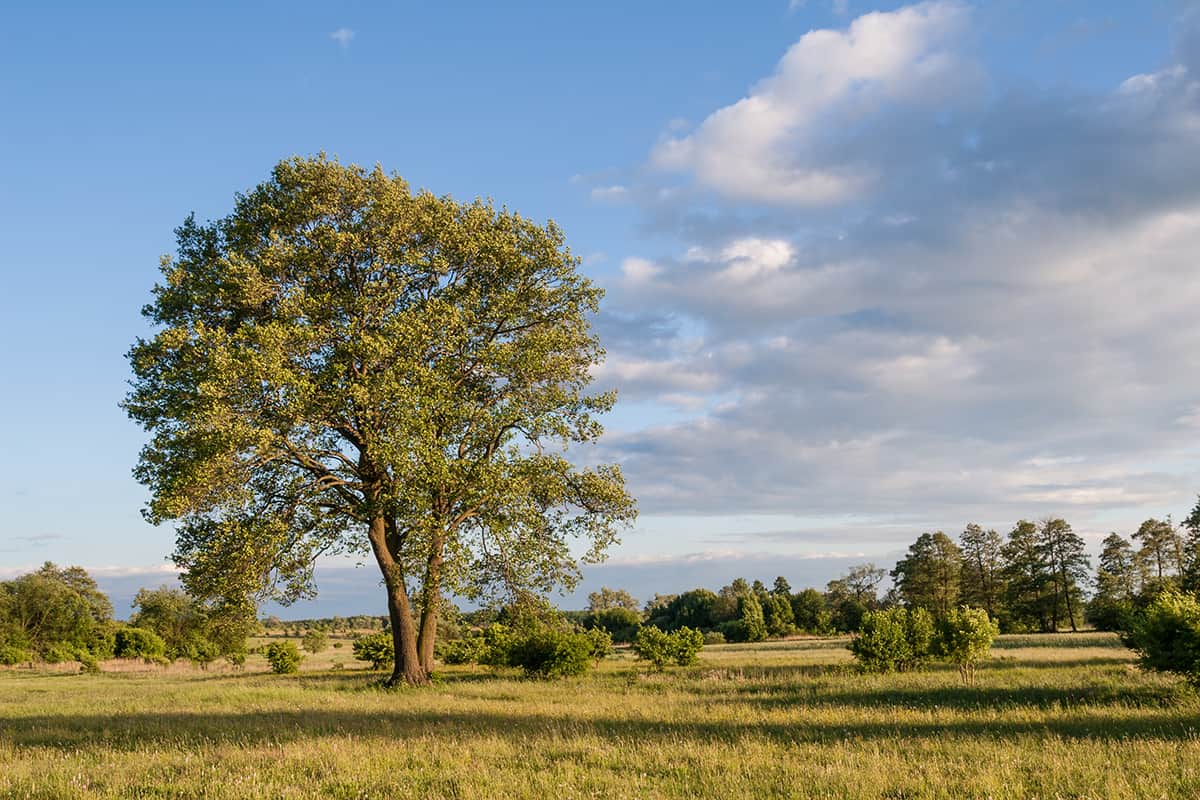
Common Name: Alder Trees
Alder trees are native to almost all of Europe, with some species also being found in the Americas. There are over 30 species in this genus, most of which thrive in wet, swamp-like conditions. Typically you will find Alder trees growing alongside riverbanks, in wetlands, woodlands, and close to ponds and other sources of water.
They prefer moist and damp conditions and are able to grow in places where other trees will struggle due to the fact that they thrive in soils that are lacking in nutrients. Alder trees are commonly linked with the Frankia alni bacterium, which is associated with fixing the nutrient content of soils. Alder trees tend to be fast-growing and will reproduce easily from seed. They have strong roots which can help with issues around soil erosion, particularly near streams or riverbanks.
Types of Alder Trees:
- White Alder
- Red Alder
- Smooth Alder
Betula Species
Common Name: Birch Trees
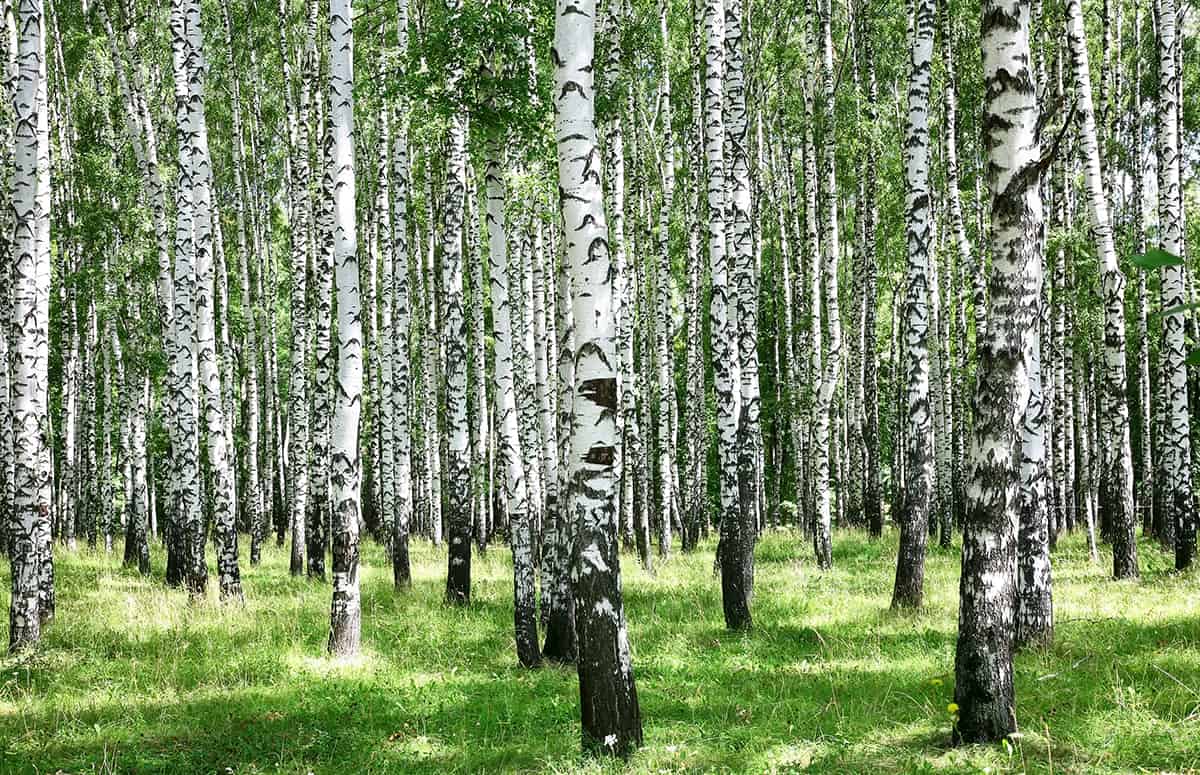
Birch trees belong to the Betulaceae family, which also includes Alders and Hazels. There are believed to be between 30 and 60 species of Birch in existence, and at least 11 of these are considered to be in danger of extinction. The majority of Birch species are native to Asia and Europe, with a smaller number growing natively in North America. Birch trees are typically small to medium in size, and they can also be grown as shrubs.
They tend to have quite a slender shape, with trunks and limbs which remain long and thin. Birch trees are relatively short-lived, though they are able to colonize rapidly on bare ground. They are known to thrive in areas that have been destroyed or disturbed by fire, and will fare especially well in acidic soils. Birch trees are widely cultivated for their ornamental value, as they often have attractive white park which peels away or sheds in ribbons.
The leaves and canopy of the Birch tree have an elegant look about them which add to their value in the landscape. Birch trees are also grown for their wood; birch wood burns well even when it hasn’t fully dried out, making it useful for fuel. The wood of the Birch tree is also commonly used in producing household goods such as butcher’s block countertops, and dining furniture. It has a pale, creamy color, with a subtle grain.
Types of Birch Trees:
- Yellow Birch
- Sweet Birch
- Erman’s Birch
- River Birch
- Chinese Red Birch
- Paper Birch
- Himalayan Birch
Cedrus Species
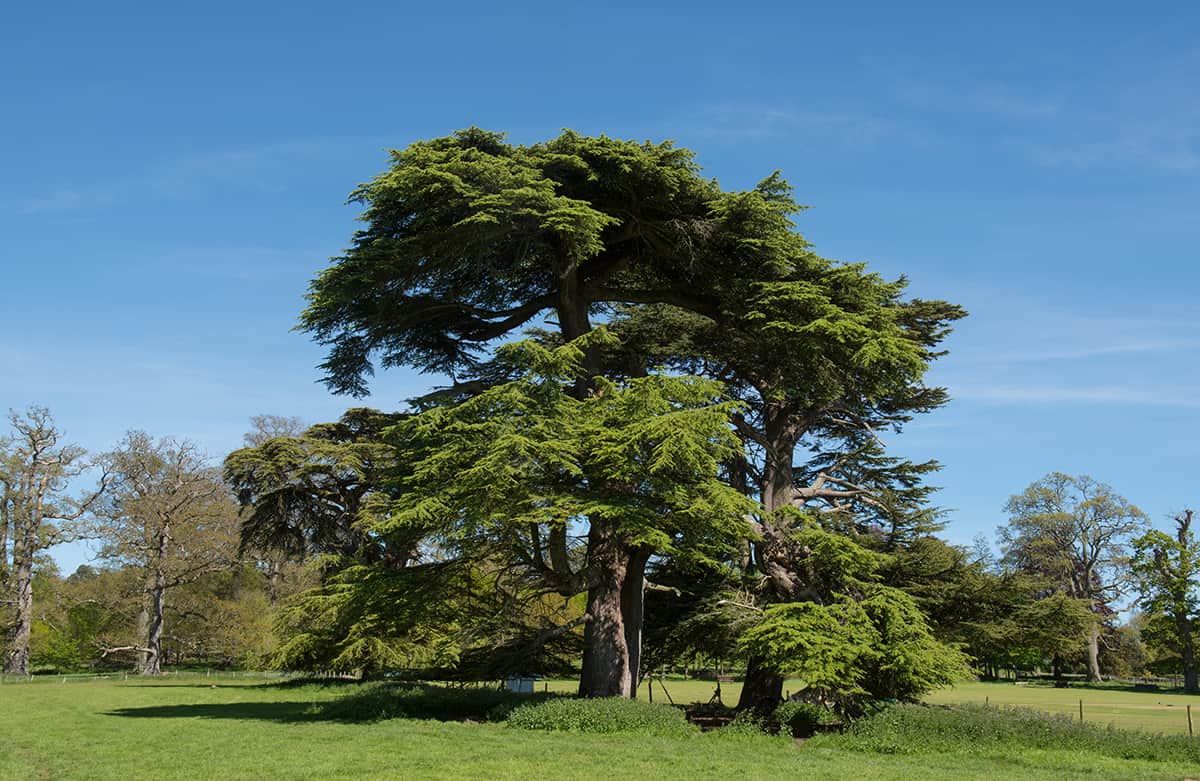
Common Name: Cedar Trees
Cedar trees are part of the Cedrus genus, which belongs to the Pine (Pinaceae) family. These are evergreen, coniferous trees which commonly grow to great sizes, taking on a majestic look. Most Cedar trees are native to the Mediterranean region and the Himalayan mountain range.
The foliage of Cedar trees takes the shape of needle-like leaves which are arranged in spirals around the branches. The cones of the tree will release winged seeds which disperse in all directions when they reach maturity. There are no Cedar species which are native to North America, however, some native American trees are commonly regarded as Cedar trees, such as varieties of Juniper and Cypress trees.
True Cedar trees contain an oil that is utilized as an insect repellant in parts of Europe, and the wood of the Cedar tree is used in furniture which stores clothing, as a way of preventing moths from getting to the clothes. In North America, furniture sold as ‘cedar chests’ or ‘cedar wardrobes’ are usually made from a type of Juniper known as ‘Red Cedar’ (Juniperus virginiana).
Types of Cedar Trees:
- Atlas Cedar
- Deodar Cedar
- Cedar of Lebanon
Cercis Species
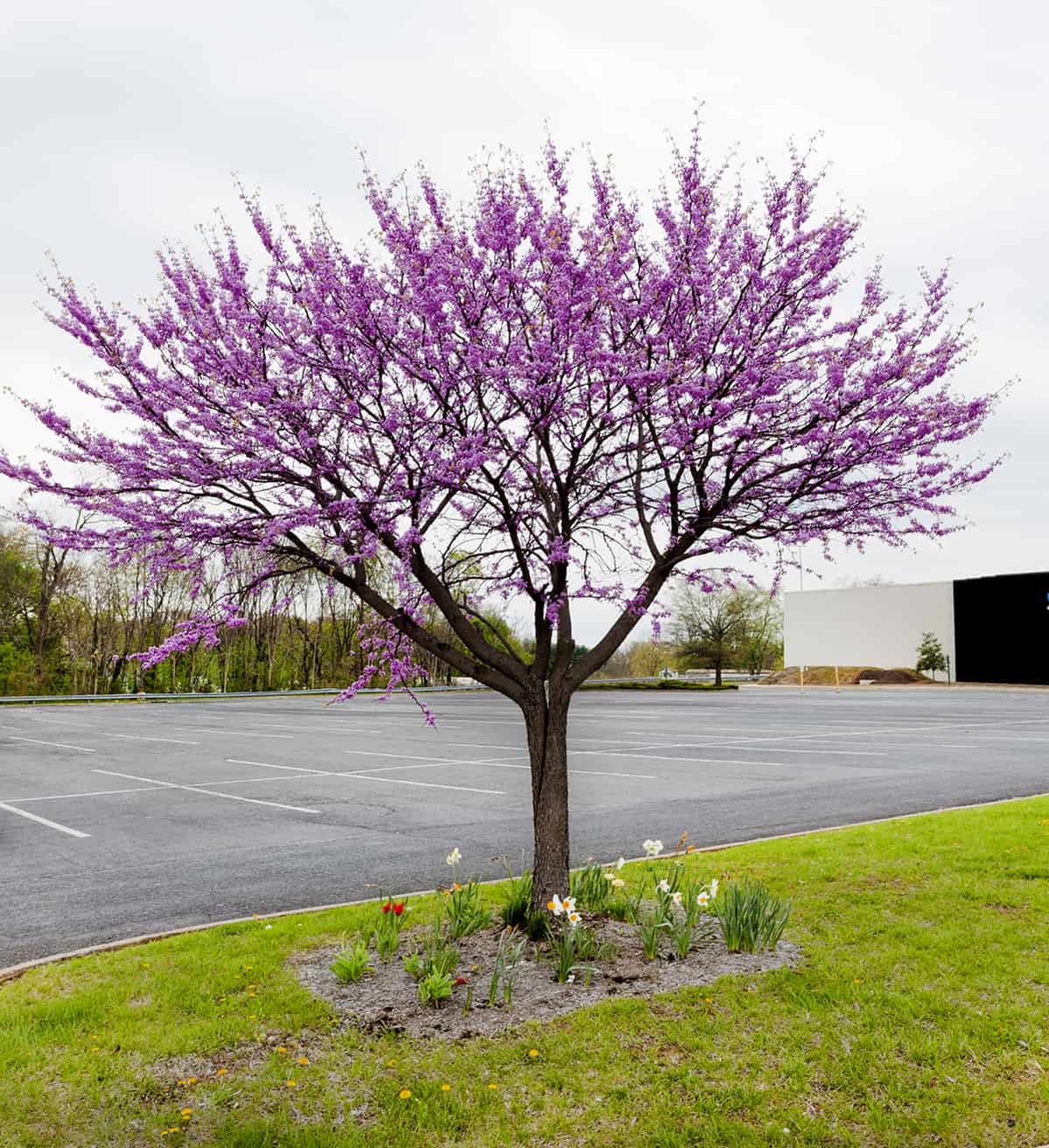
Common Name: Redbud Trees
There are ten species in the Cercis genus which are made up of both trees and shrubs commonly known as Redbuds. These belong to the Pea (Fabaceae) family. There are four species of Redbuds which are native to the Americas and one species which is native to the Mediterranean region in Europe. The remaining Redbuds are all native to Asia.
Redbuds are deciduous, with heart-shaped leaves which drop to the ground in fall after warming up to shades of gold and orange. The flowers of Redbud trees are one of their most remarkable features, adorning the lengths of bare branches through spring before the leaves have had a chance to make an appearance. Flowers are pink or purple and pea-like, and these descend into pea-pods in dark purple which can remain on the tree into winter.
Types of Redbud Trees:
- Eastern Redbud
- Western Redbud
- Chinese Redbud
Cornus Species
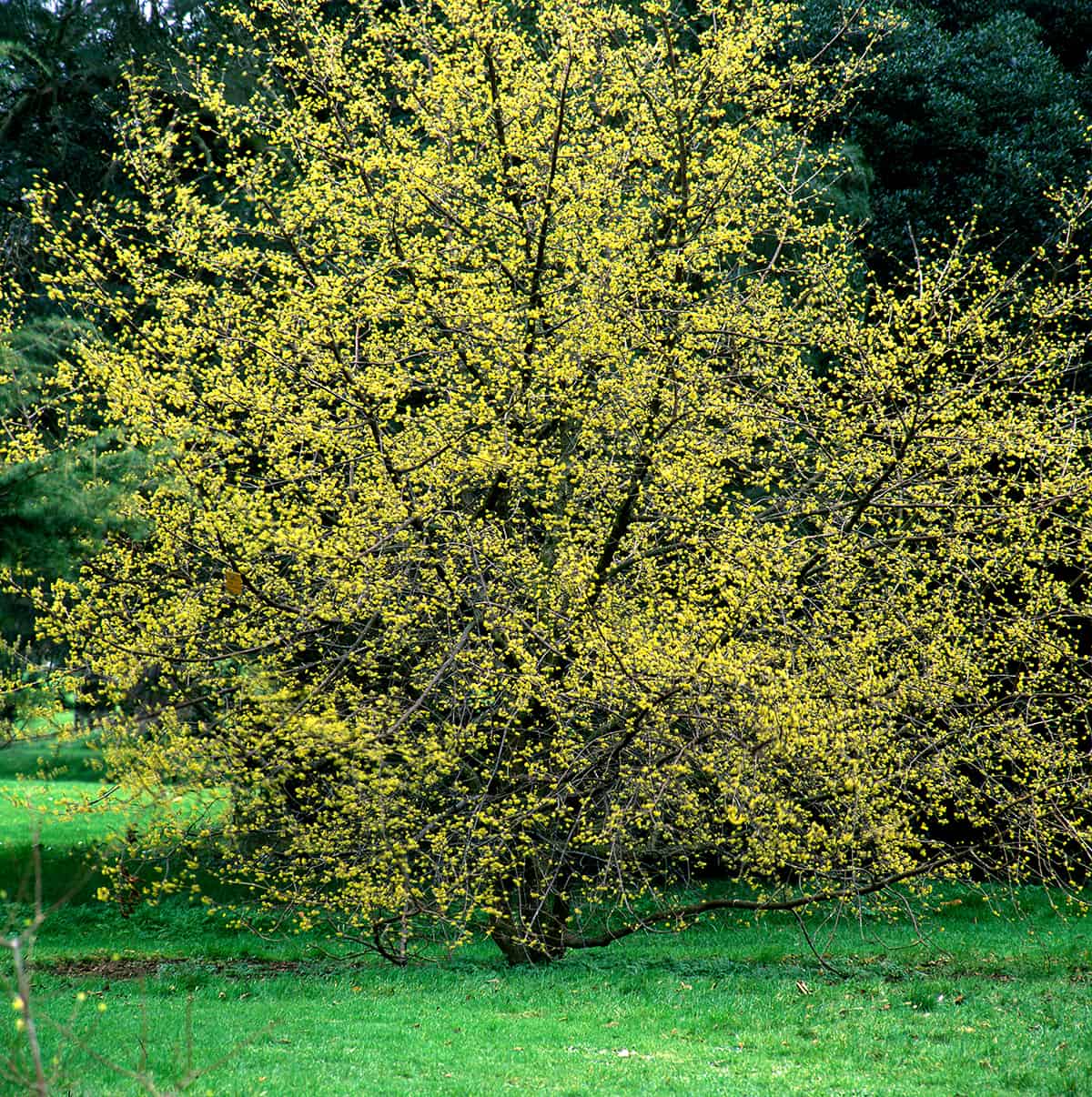
Common Name: Dogwood Trees
The trees and shrubs belonging to the Cornus genus are commonly known as Dogwoods. This name is believed to come from the Old English word ‘dagwood’, which refers to daggers made from wood. It’s possible that the Dogwood was named after the fact that its branches were used to make daggers.
Most Dogwood species are deciduous, but there are a few evergreen types. There are varieties of Dogwood which are native to Asia, Europe, and North America. The southern United States is known for being home to a particularly wide array of Dogwood species.
Many types of Dogwood are cultivated for their ornamental value, with brightly colored stems in red, orange, or yellow, which add a splash of color to the winter landscape. Dogwoods also produce showy bracts of flowers, although it is actually the white bracts surrounding the flowers which create a blossoming appearance, rather than the petals of the flowers themselves, which are tiny and usually go unnoticed.
Types of Dogwood Trees:
- Evergreen Dogwood
- Pagoda Dogwood
- Roughleaf Dogwood
- Flowering Dogwood
- Swamp Dogwood
- Kousa Dogwood
- Chinese Dogwood
Cupressus Species
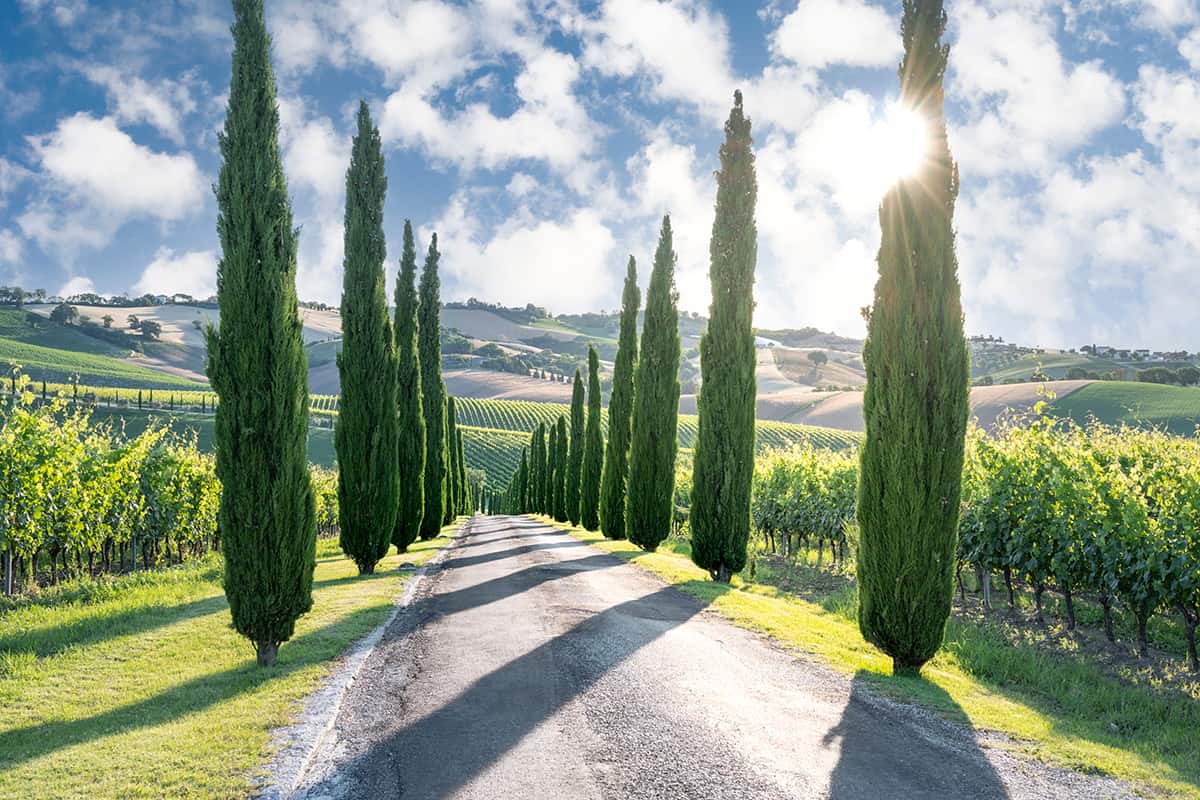
Common Name: Cypress Trees
The Cupressus genus belongs to the Cupressoideae family, and it is the only genus which includes true Cypress trees. There are several other types of trees which carry the common name of Cypress tree, however, these would be considered to be false cypress trees since they are not within the Cupressus genus. Cypress species are evergreen conifers which can come in the form of trees or shrubs. They can range in size greatly, from around 12 feet to 125 feet depending on the variety.
Young Cypress trees have needle-like foliage, but after the age of around 2 years, the foliage will take on a more scale-like appearance. Cypress trees are native to temperate regions, with a number of varieties hailing from North America, Europe, and Asia. They produce cones that open up to release seeds at maturity, from which new trees can be grown.
Cypress trees are sometimes cultivated for their strong timber, but more commonly these plants are grown for their ornamental value, and to provide structure or privacy in the landscape.
Types of Cypress Trees:
- Smooth Arizona Cypress
- Monterey Cypress
- Italian Cypress
- Nootka Cypress
- Kashmir Cypress
Eucalyptus Species
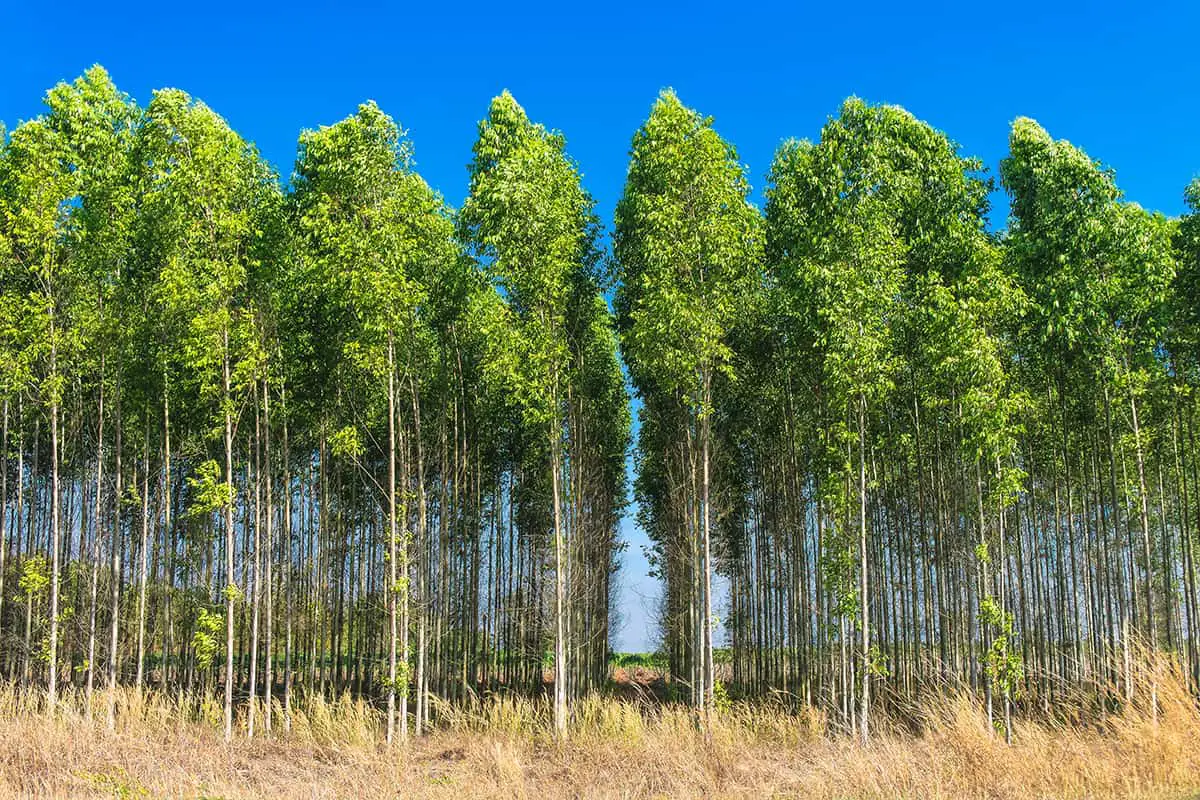
Common Name: Eucalyptus Trees/ Gum Trees
The Eucalyptus genus is huge, comprising more than 700 different species of trees and shrubs. Eucalyptus plants belong to the Myrtle (Myrtaceae) family, and they are predominantly native to Australia. They are evergreen trees which produce flowers, and are commonly known for their colorful or interesting bark, and their blue-green, elegant leaves.
All Eucalyptus species produce a new layer of bark each year, and the previous year’s layer of bark is no longer needed. In some types of Eucalyptus, the old bark will peel away in ribbons, or it may shed in flakes. These trees grow well in a range of conditions and have become well adapted to fire, however they are typically not tolerant of low temperatures which dip beyond 23 °F.
Eucalyptus trees are fast-growing and will regrow again even when chopped down to root level. This makes them a valuable resource for their wood, which is used as timber, firewood, and more commonly, as pulpwood for making paper.
Types of Eucalyptus Trees:
- Tasmanian Snow Gum
- Mountain Gum
- Rainbow Eucalyptus
- Cider Gum
- Snow Gum
Fagus Species
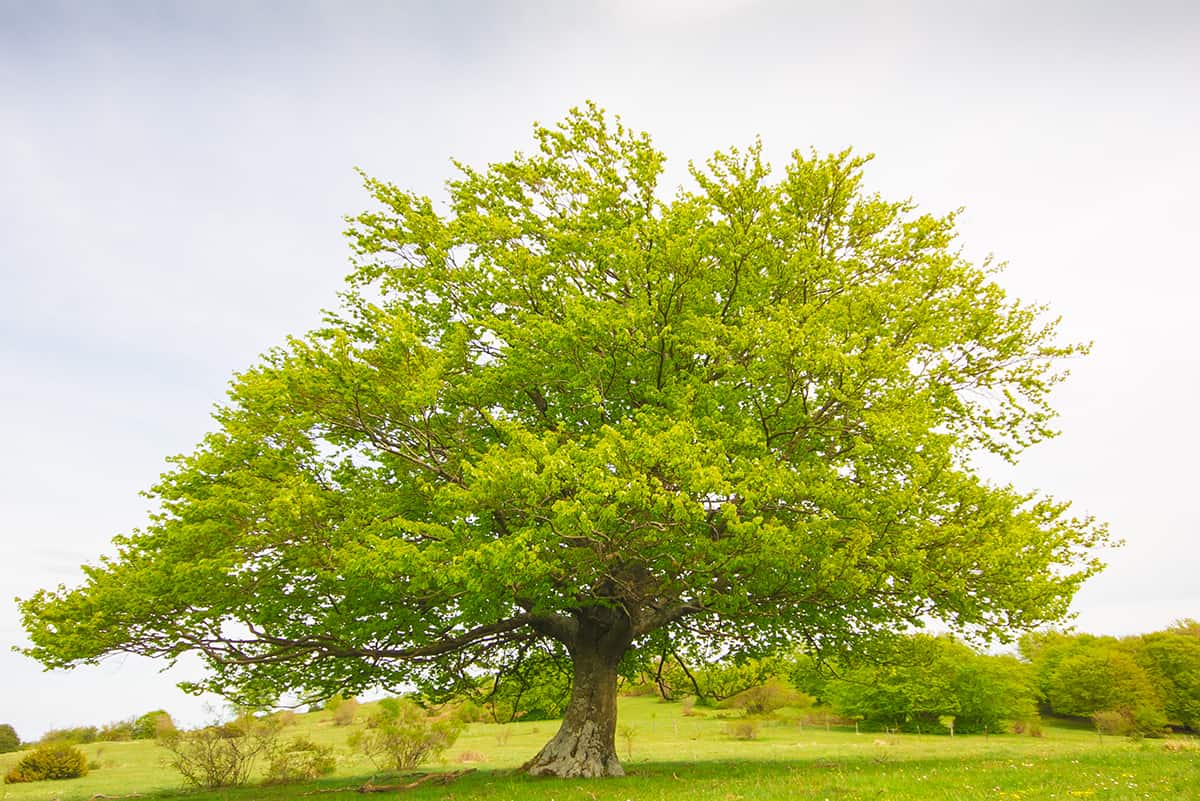
Common Name: Beech Trees
The Fagus genus of plants includes a little more than 10 species which are commonly regarded as Beech trees. These are deciduous trees, with slender gray trunks, and flowers which are both male and female on a single tree. Beech trees are native to Asia, North America, and Europe.
They are widely cultivated for their timber, which is used in construction more so than in furniture making, because the wood has a tendency to become discolored or warped over time. Beech wood is commonly used to smoke meats such as hams and fish, and it also makes good firewood and pulpwood.
Types of Beech Trees:
- American Beech
- European Beech
- Fern-Leaved Beech
Fraxinus Species

Common Name: Ash Trees
The Fraxinus genus of trees comprises species which are commonly known as Ash trees. They are predominantly deciduous, flowering trees, but a small number are evergreen when grown in tropical or subtropical climates. Ash trees belong to the Olive (Oleaceae) family and are typically medium to large in size.
There are over 40 different species of Ash, and these are native to Asia, North America, and Europe. One of the defining features of Ash trees which make them easy to distinguish from other species are their seeds. Ash seeds are often known as ‘helicopter seeds’ because they are shaped like a set of wings, and will spin around like a helicopter’s rotor blades as they drop to the ground.
Ash is an important source of food for creatures in its native habitat, namely frogs which feed on the leaves as tadpoles. Other creatures which rely on the Ash tree for survival include white-tailed deer, voles, lace bugs, aphids, wild turkeys, and some birds. Ash is widely used for its wood which is known for being strong, dense, and resilient. It is widely used in making baseball bats and handles for tools, and it is also popularly used in the production of electric guitars.
Types of Ash Trees:
- White Ash
- Claret Ash
- Oregon Ash
- European Ash
- Flowering Ash
- Green Ash
Ilex Species
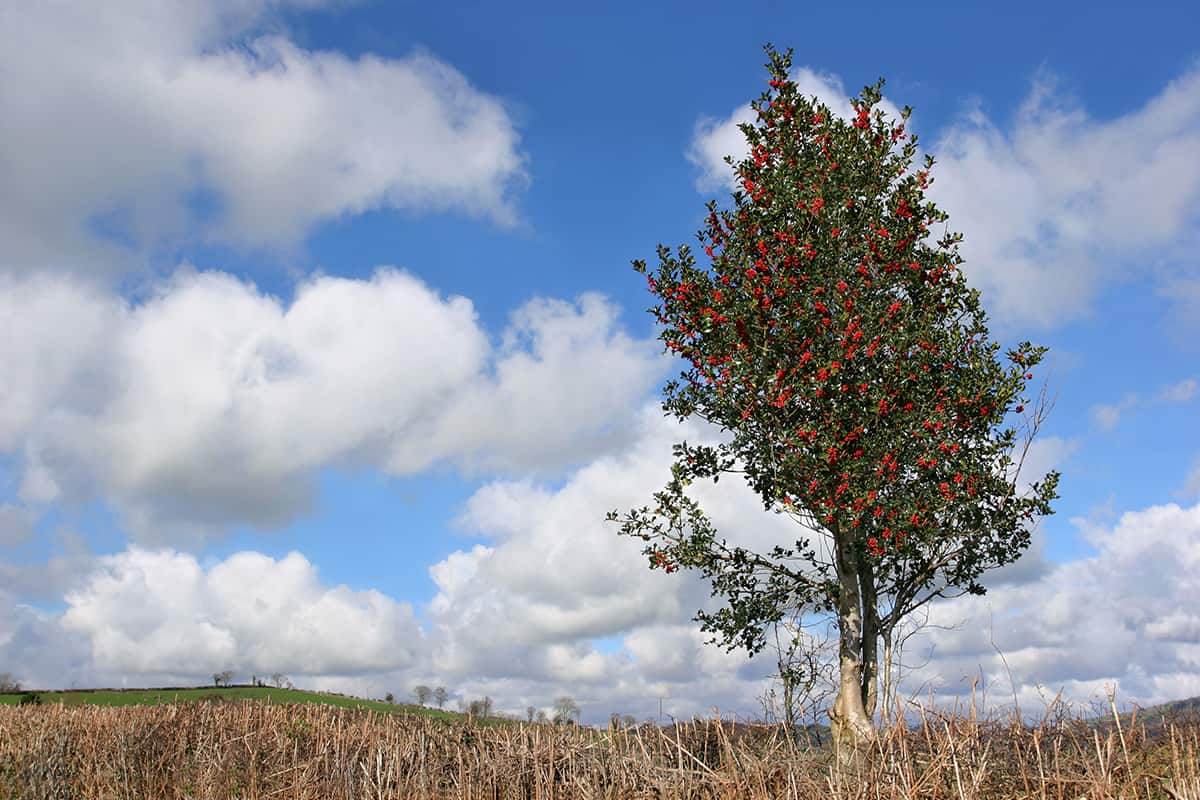
Common Name: Holly Trees
Ilex species are more commonly known as Holly. This is a very varied genus of plants which includes more than 400 species of both deciduous and evergreen trees, climbers, and shrubs. Holly is widely associated with Christmas because Christians believe the spiny margins of the Holly leaf symbolize the thorny crown of Christ, and the bright red berries are symbolic of his blood.
For this reason, Holly branches are commonly used to create wreaths around the festive period, and they are heavily featured on Christmas cards, wrapping paper, and other festive decorations. Most Holly plants are slow growing and easy to care for. They thrive in woodland conditions or rock gardens and can be put to good use as specimen trees or as privacy hedging.
If you want your Holly tree to produce berries you will need to grow both a male and female specimen. This is because the vast majority of Holly plants are dioecious, which means they must be cross-pollinated with other Holly trees in order to fruit.
Types of Holly Trees:
- Japanese Holly
- Chinese Holly
- American Holly
Juniperus Species
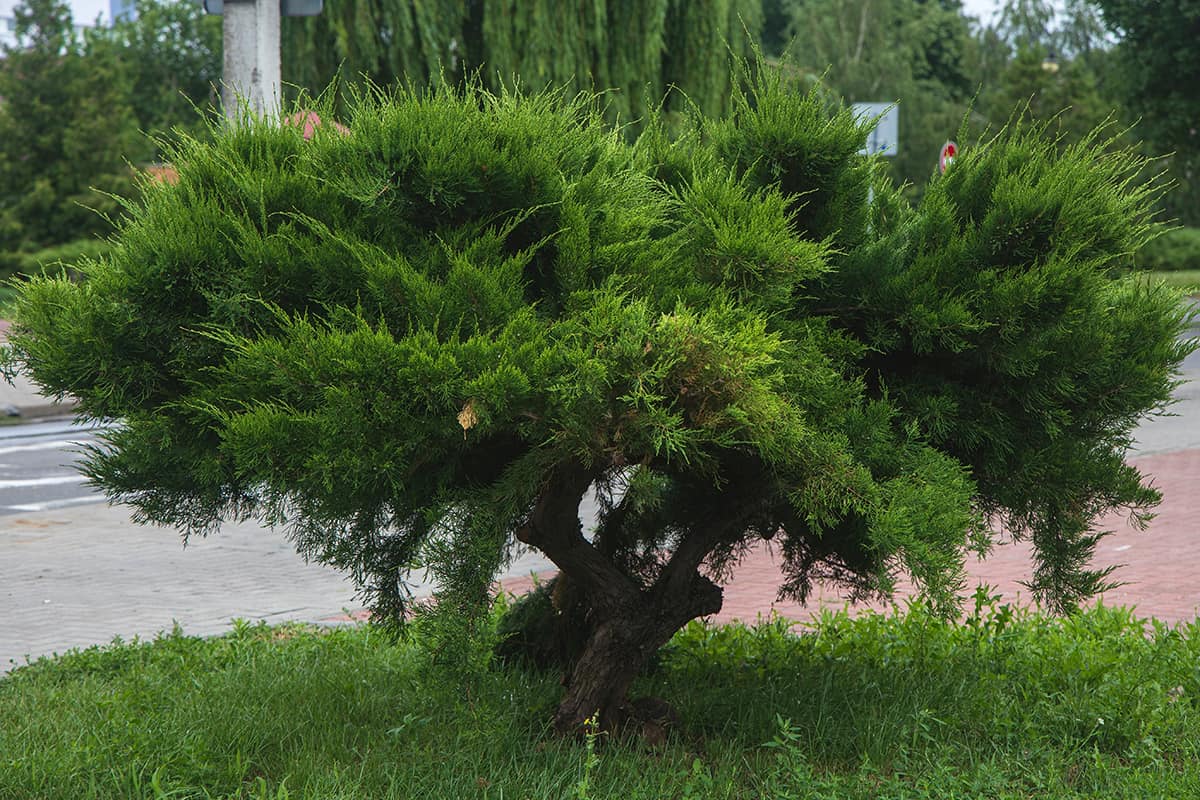
Common Name: Juniper Trees
Species in the Juniper genus belong to the Cypress (Cupressaceae) family. They are evergreen, coniferous trees, with more than 50 species in existence across the world, which are native to a wide range of habitats. Different types of Junipers hail from locations including North America, Central America, Asia, Africa, and the Arctic.
They are generally medium to large trees, reaching typical heights of between 50 and 140 feet. Their foliage can be needle-like or scale-like, with both types appearing on a single tree in some species. Juniper trees are cultivated for their wood which is useful for furniture making, fence posts, and cladding. The berries of the Juniper tree can be used in cooking, and they are popularly known for being used to produce gin.
Types of Juniper Trees:
- Common Juniper
- Chinese Juniper
- Rocky Mountain Juniper
- Eastern Red Cedar
Magnolia Species
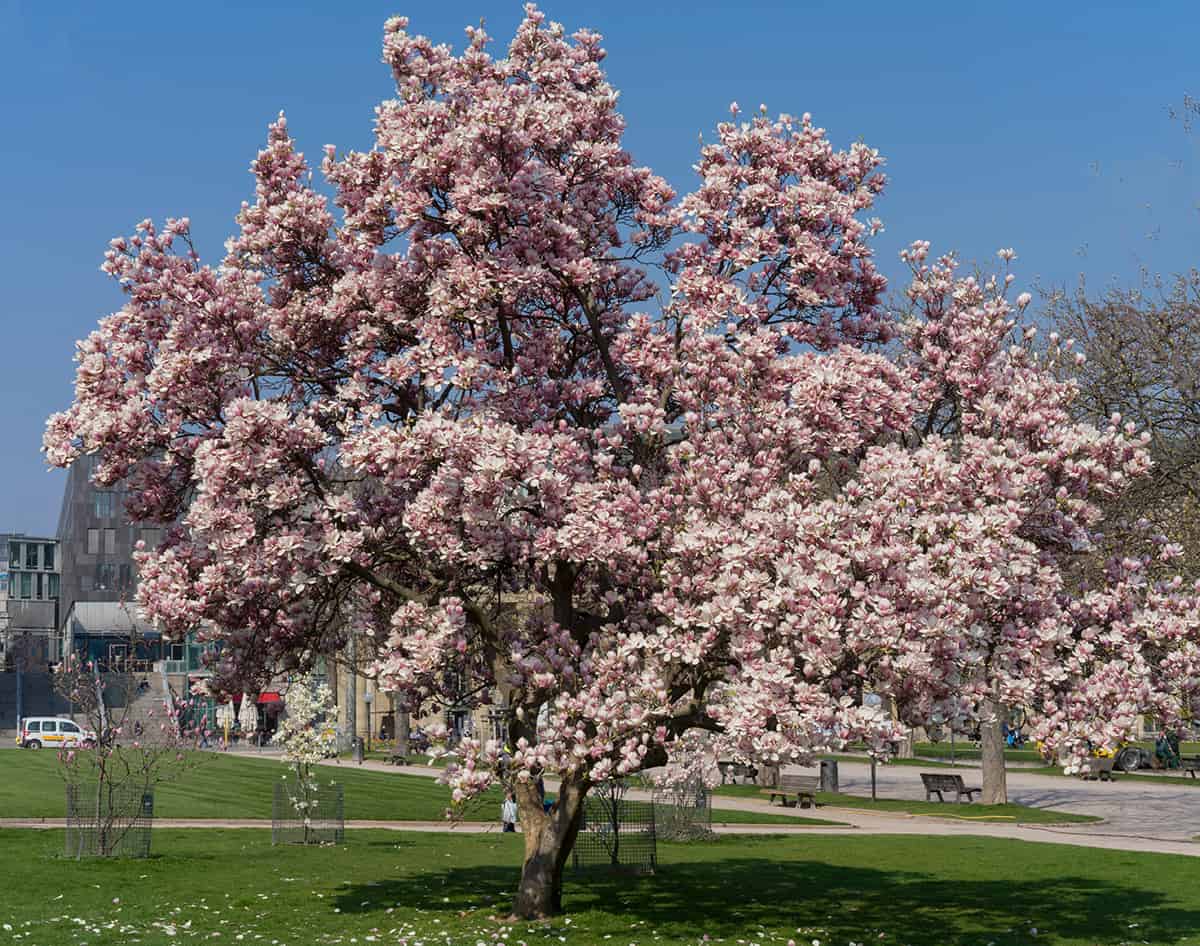
Common Name: Magnolia Trees
Species of Magnolia can be evergreen or deciduous, and they may take the form of shrubs, trees, or climbing plants. One of the most popular reasons for Magnolia trees to be grown is for their flowers, which are heavily fragrant, large and showy, and long-lasting.
They are among some of the earliest flowers to bloom each season, with flowers appearing as early as the end of winter, adding much-needed color and beauty to the landscape. Some Magnolia flowers can last for weeks or even months at a time, and be bowl-shaped or star-shaped. Magnolia flowers are usually white, but they can also come in shades of pink and yellow.
Types of Magnolia Trees:
- Saucer Magnolia
- Yulan Magnolia
- Southern Magnolia
- Bigleaf Magnolia
- Anise Magnolia
- Star Magnolia
Picea Species

Common Name: Spruce Trees
Picea trees, more widely known as Spruce trees, are a genus within the Pine (Pinaceae) family. There are more than 30 known species of Spruce trees which are all evergreen and coniferous. They can generally be identified by their tall, conical shape, and their needles which have four sides.
Ranging in height from 60 feet to 200 feet when mature, Spruce trees are among some of the tallest trees on earth. This is a long-lived species, and in fact, the oldest living tree on the planet is believed to be a Norway Spruce (Picea abies) located in a mountainous region of Sweden. The tree is affectionately known as ‘Old Tjikko’, and is thought to be 9565 years old.
Types of Spruce Trees:
- Norway Spruce
- White Spruce
- Engelmann Spruce
- Black Spruce
- Serbian Spruce
- Colorado Spruce
- Red Spruce
Pinus Species
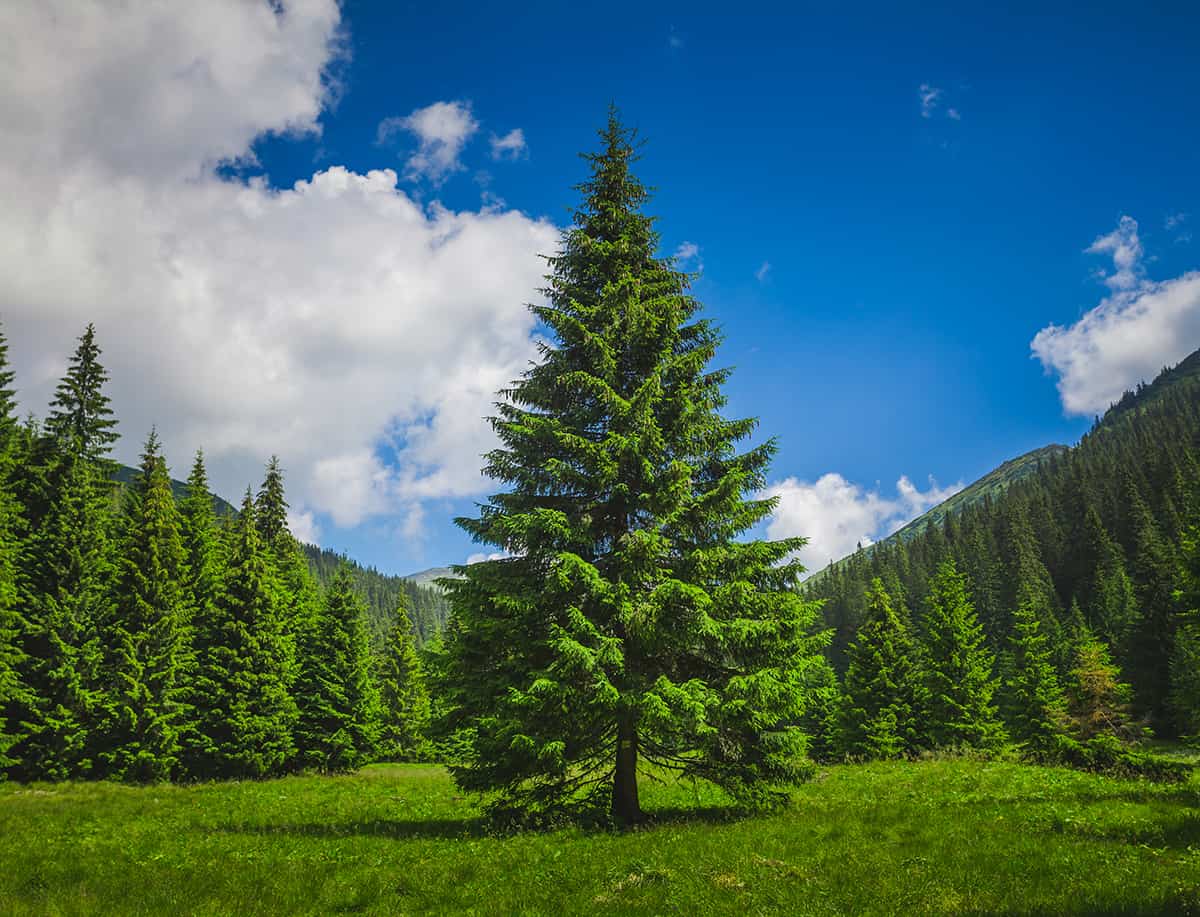
Common Name: Pine Trees
The amount of species in the Pine genus is somewhere between 100 and 200, depending on who you ask. Both the Missouri Botanical Garden and the Royal Botanical Gardens at Kew agree that there are 187 known species of Pine, while the Royal Horticultural Society and the American Conifer Society believe that there are only 121 known species of Pine trees.
Pines are evergreen, coniferous trees, which may have a rounded or pyramid-shaped canopy. They have long life expectancies, with pine trees reaching between 100 and 1000 years old, though some examples will exceed this. One of the oldest trees in the world is a Bristlecone Pine (Pinus longaeva) which is growing in the Sierra Nevada mountain range in California. It is known as ‘Methuselah’, after the longest-living person in the Bible.
Types of Pine Trees:
- Shore Pine
- Jack Pine
- Whitebark Pine
- Limber Pine
- Japanese Red Pine
- Slash Pine
- Sugar Pine
- Austrian Pine
- Ponderosa Pine
- Pitch Pine
- Eastern White Pine
Populus Species
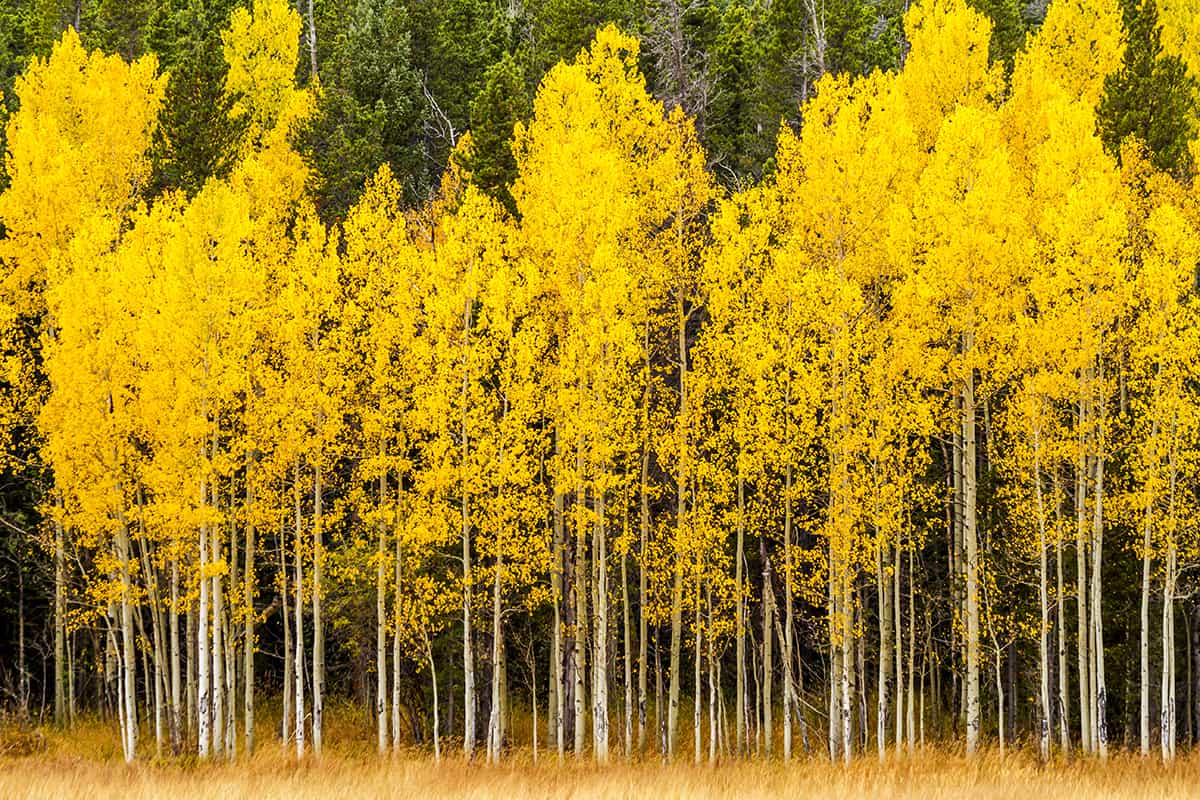
Common Name: Poplar Trees/ Cottonwood Trees/ Aspen Trees
Trees in the Populus genus belong to the Willow (Salicaceae) family. There are over 25 different species of Populus trees, which are more commonly known as Poplar, Aspen, or Cottonwood. These trees are known for having rapid growth patterns, and being able to quickly populate areas with dense forests.
Broken branches which lay on the ground can easily take root, and the trees also have excellent suckering qualities. The result is that Poplar trees can spread almost uncontrollably. Like Willow trees, Poplar trees have wide-spreading roots which can become invasive.
They should not be planted close to buildings or other structures, as their roots typically extend over 100 feet from the trunk of the tree beneath the ground. They make excellent ornamental trees and are especially useful to create height in a short space of time because of their rapid growth.
Types of Poplar Trees:
- Eastern Cottonwood
- Western Cottonwood
- Lombardy Poplar
- White Poplar
- American Aspen
- European Aspen
Prunus Species
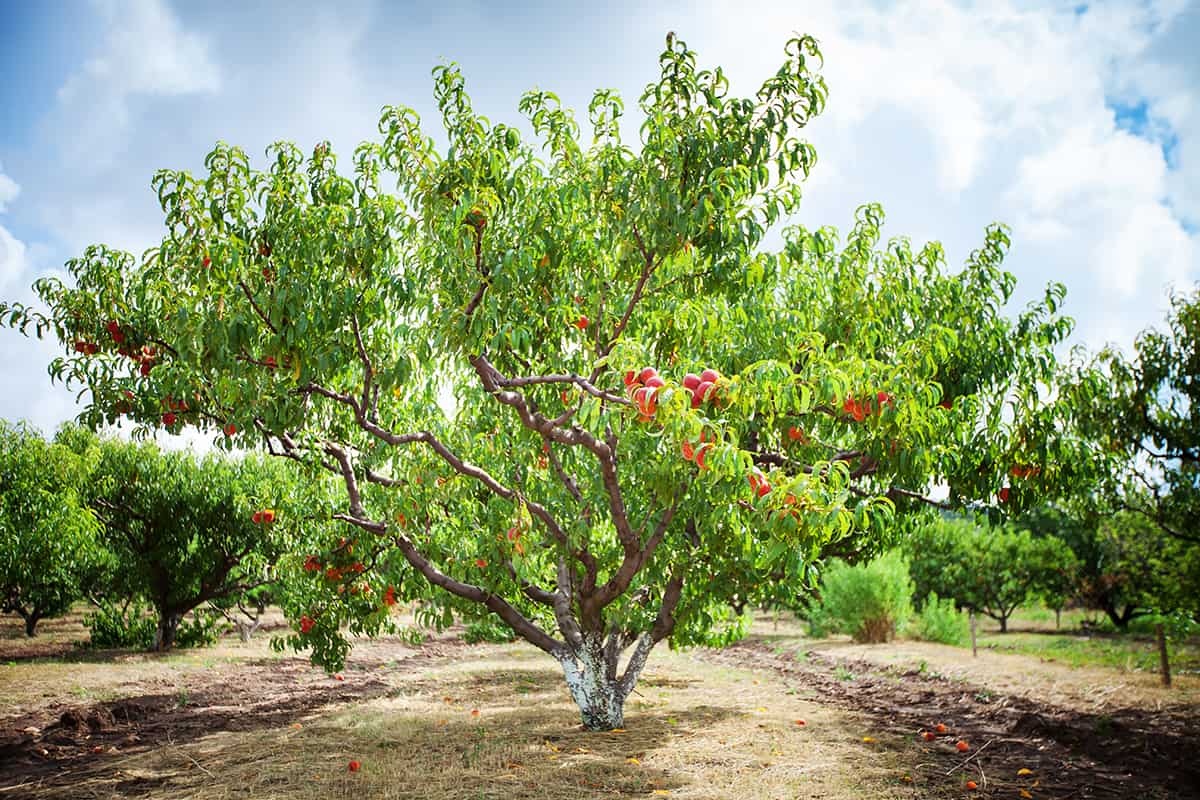
Common Name: Cherry Trees/ Apricot Trees/ Plum Trees/ Peach Trees
Prunus trees belong to the Rose (Rosaceae) family and are native to North America, South America, Africa, and Asia. They can be deciduous or evergreen and are able to produce delicious edible fruits such as plums, peaches, apricots, cherries, almonds, and nectarines.
Types of Prunus species are widely known for their ability to bloom early in the season, with pretty blossoms which cover the stems and branches of the trees for a dramatic appearance. Prunus species are widely cultivated for their fruits, which can be used in canning, drying, and in the production of jams and preserves. These trees also make excellent specimen trees.
Types of Cherry Trees:
- Japanese Cherry
- Flowering Cherry
- Weeping Cherry
- Higan Cherry
- Sweet Cherry
- Wild Cherry
- Tibetan Cherry
Quercus Species
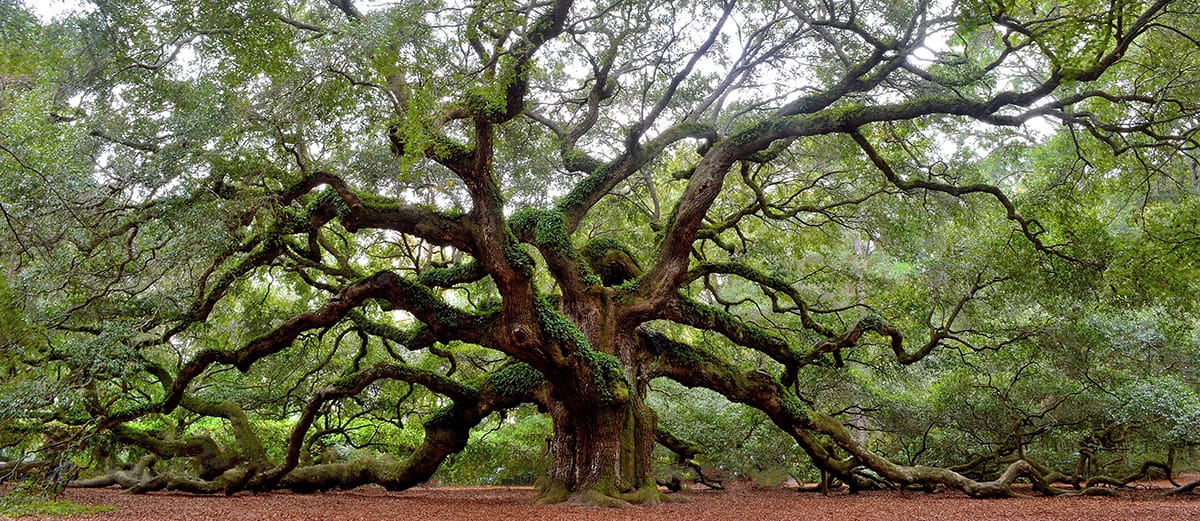
Common Name: Oak Trees
There are around 500 species of Oak trees currently in existence, which are native to a broad range of climates across the world. The most diverse area of Oaks on earth is in Mexico, where there are around 160 different types of oak, and more than half of these are endemic. China also has a broad range of native Oaks, with around 100 different types of Oak trees.
Oak trees also grow natively in Europe, across the Americas, and North Africa. Oak trees are cultivated for their wood which is used as lumber. It is known for being incredibly strong and hard, and the high proportion of tannins in the wood also means it is quite resistant to insects and fungal infestations. It has an attractive color and grain pattern, which make it a popular choice of wood for flooring and furniture.
Types of Oak Trees:
- White Oak
- Turkey Oak
- Coast Live Oak
- Blue Oak
- Scarlet Oak
- Holm Oak
- Laurel Oak
- Pink Oak
- Myrtle Oak
- English Oak
- Post Oak
- Live Oak
- Black Oak
- Cork Oak
Salix Species
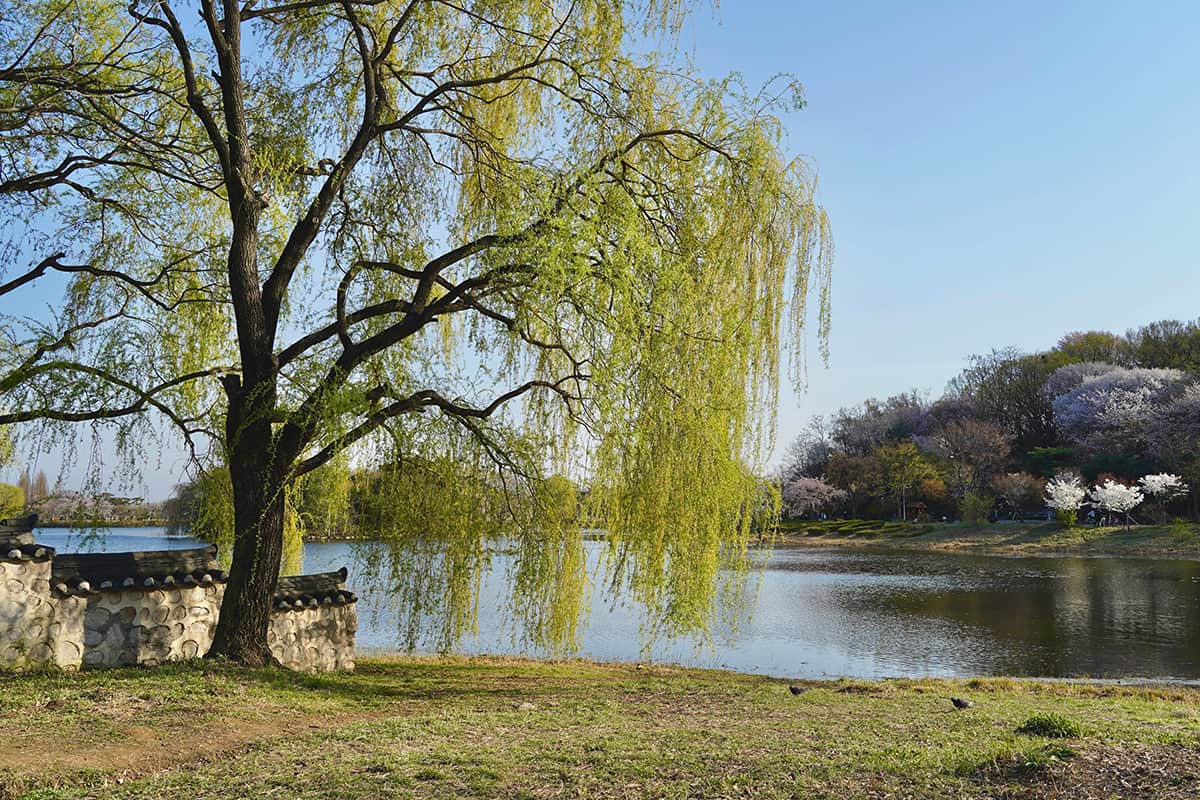
Common Name: Willow Trees
Willow trees are also commonly known as Osiers and Sallows. They are loved for their graceful foliage, and their ability to tolerate wet conditions. There are over 300 different species of Willow, most of which are deciduous.
They can take the form of trees or shrubs, and are native to Africa, Europe, Asia, and America. Willows have flexible stems and branches, which makes them ideal for weaving into baskets and other wicker homewares. The wood from willow trees is also used in the making of brooms, paper, string, and rope.
Types of Willow Trees:
- White Willow
- Weeping Willow
- Corkscrew Willow
- Shining Willow
- Black Willow
- Purple Willow
Thuja Species

Common Name: Arborvitae Trees
The Thuja genus contains just five species of trees; two of these are native to North America, and the remaining three species are native to Asia.
Thuja trees are commonly known as Arborvitae trees, and they can reach great heights of up to 200 feet, although there also many dwarf varieties in existence which may be better options for home gardens. Arborvitae trees belong to the Cypress (Cupressaceae) family and are evergreen and coniferous. They have scale-like foliage which is arranged in flattened fan-shapes.
Types of Arborvitae Trees:
- American Arborvitae
- Western Arborvitae
- Japanese Thuja
- Korean Thuja
Ulmus Species
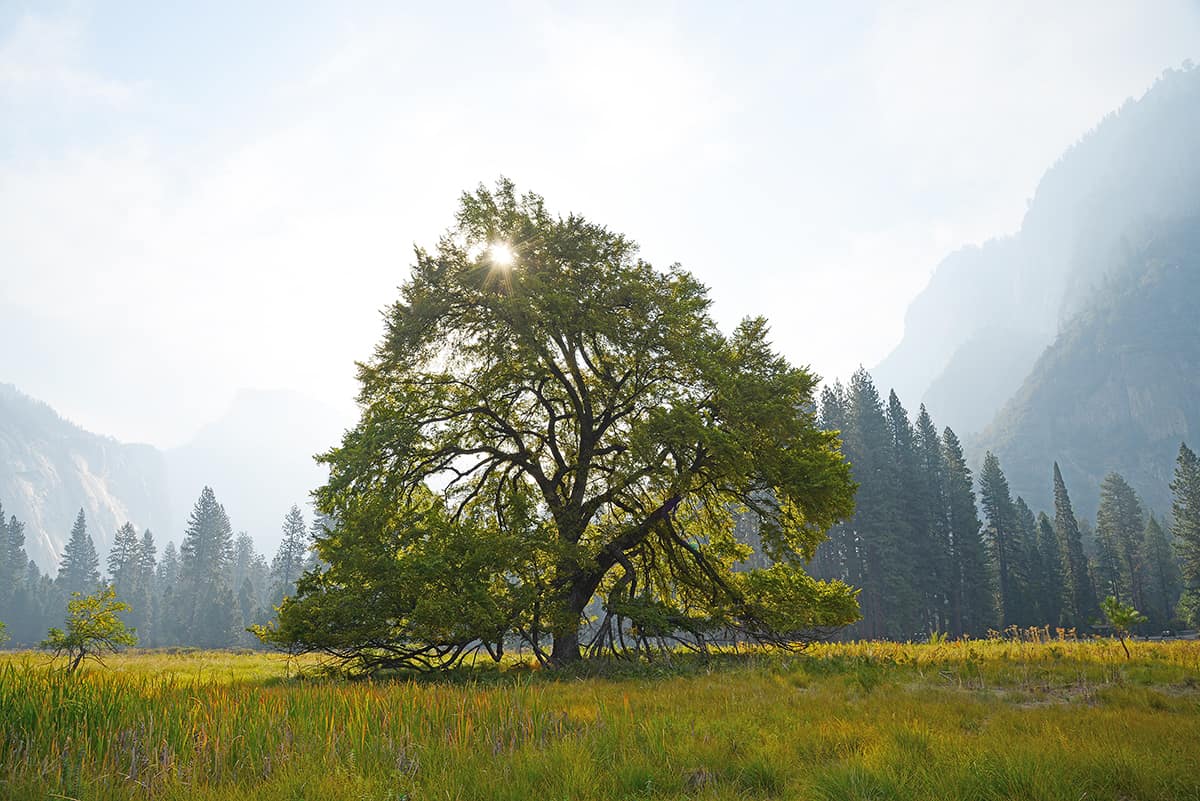
Common Name: Elm Trees
Elm trees are typically deciduous and are native to temperate regions across North America and Europe. They were widely planted as landscape and park trees in both North America and Europe in the 1800’s, however, most of these specimens succumbed to Dutch Elm Disease in recent years and did not survive.
This disease was caused by a fungus which was spread by beetles, and it has devastated many populations of Elms. Due to this, Elm cultivars have been created which are resistant to the disease, and these are hoped to restore the population of Elms in public areas and gardens.
Elms make excellent shade trees, and they are known to adapt well to a range of soil types and climates and can tolerate saltwater and strong winds.
Types of Elm Trees:
- American Elm
- Winged Elm
- Scotch Elm
- Golden Elm
- Chinese Elm
